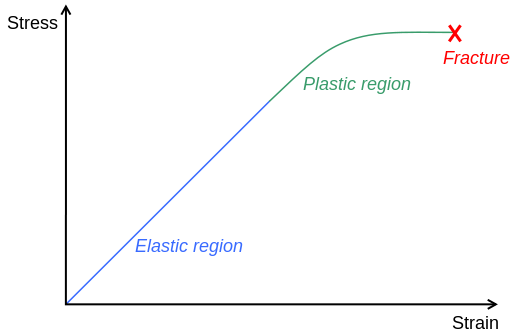Hardness: Difference between revisions
No edit summary |
No edit summary |
||
| Line 1: | Line 1: | ||
Hardness is the measure of how well a solid object can resist shape change when being exposed to compressive forces. | Hardness is the measure of how well a solid object can resist shape change when being exposed to compressive forces. | ||
| Line 32: | Line 31: | ||
== See also == | == See also == | ||
https://en.wikipedia.org/wiki/Mohs_scale_of_mineral_hardness | |||
http://www.npl.co.uk/upload/pdf/brinell_hardness_co.pdf | http://www.npl.co.uk/upload/pdf/brinell_hardness_co.pdf | ||
| Line 47: | Line 47: | ||
http://chemwiki.ucdavis.edu/Analytical_Chemistry/Chemical_Reactions/Properties_of_Matter | http://chemwiki.ucdavis.edu/Analytical_Chemistry/Chemical_Reactions/Properties_of_Matter | ||
https://en.wikipedia.org/wiki/Mohs_scale_of_mineral_hardness | |||
https://en.wikipedia.org/wiki/File:Stress-strain1.svg | https://en.wikipedia.org/wiki/File:Stress-strain1.svg | ||
| Line 53: | Line 55: | ||
[[Category:Properties of Matter]] | [[Category:Properties of Matter]] | ||
Sarah Gould | |||
Revision as of 01:08, 6 December 2015
Hardness is the measure of how well a solid object can resist shape change when being exposed to compressive forces.
The Main Idea
Properties of Matter
Properties of matter are divided into two categories, chemical and physical. Hardness falls in the physical category; it can be determined without altering the matter. It is an unusual property because it is not an intrinsic property which can be defined in terms of fundamental SI units. Hardness can be difficult to calculate.
Hardness
Hardness is the measure of how well a solid object can resist shape change when being exposed to compressive forces. There is a link between hardness and chemical composition. This is due to the solid matter's crystal structure.
Why it matters
Solid matter generally has 3 responses to forces, depending on the force type and amount. Elasticity, plasticity, and fracture. Elasticity is the ability to return to original shape after force has been applied. Plasticity is the solid matter's ability to remain one piece. Fracture is when the solid matter splits into two or more pieces. Stress versus strain graphs show how these responses are related. Hardness matters because it is important to know what matters will be able to withstand certain forces and be resistant to deformation, indentation, or penetration.
Calculating Hardness
There is no one way of calculating hardness. In fact, there are many hardness tests, such as Brinell, Knoop, Rockwell, and Vickers.
Sensitivity Coefficient
These tests can be improved by the introduction of a sensitivity coefficient. Sensitivity coefficients are used to determine the factor that different parameters, such as force, diameter, and depth have on hardness.
The Sensitivity coefficient ci, is defined as the change in hardness H, over the input parameter xi:
ci = ΔH/Δxi
Examples and History
Mohs hardness scale
There is no standard hardness scale, but of the Mohs scale is the most commonly used. The Mohs scale of mineral hardness organizes the scratch resistance of various minerals. It does this by determining and ranking the ability of a harder material to scratch a softer material. It is named after its creator, Friedrich Mohs, a German mineralogist.
See also
https://en.wikipedia.org/wiki/Mohs_scale_of_mineral_hardness
http://www.npl.co.uk/upload/pdf/brinell_hardness_co.pdf
http://www.npl.co.uk/upload/pdf/vickers_hardness_co.pdf
External links
http://physicsworld.com/cws/article/news/2006/mar/09/how-to-calculate-hardness
References
http://physicsworld.com/cws/article/news/2006/mar/09/how-to-calculate-hardness
http://chemwiki.ucdavis.edu/Analytical_Chemistry/Chemical_Reactions/Properties_of_Matter
https://en.wikipedia.org/wiki/Mohs_scale_of_mineral_hardness
https://en.wikipedia.org/wiki/File:Stress-strain1.svg
http://www.npl.co.uk/science-technology/mass-and-force/hardness/
Sarah Gould
